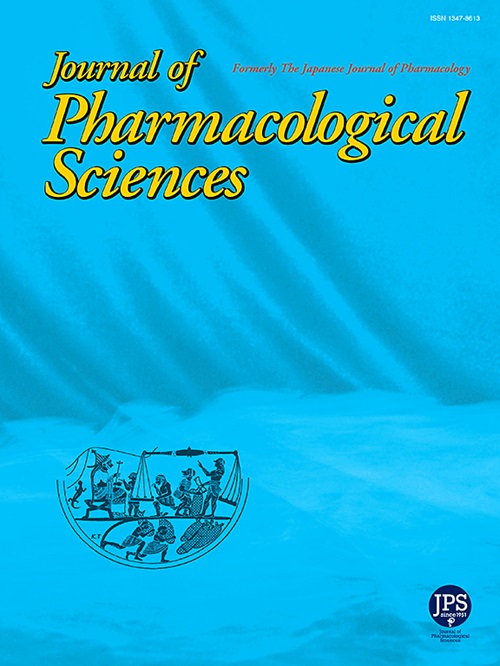罗西瑞定通过抑制STAT3/NFκB/SMAD3信号通路减少特发性肺纤维化
IF 2.9
3区 医学
Q2 PHARMACOLOGY & PHARMACY
引用次数: 0
摘要
特发性肺纤维化是一种进行性、高致命性疾病,治疗方案有限。其特点是成纤维细胞向肌成纤维细胞转化,ECM过度增殖和胶原沉积,导致正常肺结构和功能的破坏。作为红景天的组成成分,红景天苷是一种具有显著结构相容性的单体,具有很强的治疗潜力。这种生物活性化合物减轻氧化应激驱动的病理,并逆转其在各种疾病中产生的损害。然而,其对博莱霉素诱导的IPF的潜在保护作用及其潜在机制尚不清楚。本研究旨在探讨罗什瑞定在IPF中的作用及其机制。罗西瑞定可减弱TGF-β1诱导的肺上皮细胞氧化应激和炎症反应,抑制与肺纤维化相关的细胞凋亡。苏木精和伊红(HE)染色和马松三色染色显示罗西瑞定改善病理性肺改变,降低氧化应激,减轻肺纤维化呈剂量依赖性。转录组学分析显示,罗西瑞定抑制JAK蛋白活化,减少成纤维细胞向肌成纤维细胞的转化,抑制促炎和促纤维化细胞因子的分泌。这些发现表明,罗西瑞定通过调节STAT3/NF-κB/SMAD3信号通路减轻肺纤维化。罗西瑞定可能是治疗IPF的一个有希望的候选药物。本文章由计算机程序翻译,如有差异,请以英文原文为准。
Rosiridin reduces Idiopathic Pulmonary Fibrosis by inhibiting the STAT3/NFκB/SMAD3 signaling pathways
Idiopathic pulmonary fibrosis is a progressive, highly lethal disease with limited treatment options. It is characterized by fibroblast-to-myofibroblast transformation, excessive ECM proliferation and collagen deposition, leading to the destruction of normal lung architecture and function. As a constituent of Rhodiola rosea L., rosiridin is a monomer with significant structural compatibility, conferring strong therapeutic potential. This bioactive compound mitigates oxidative stress-driven pathology and reverses its resultant damage in various diseases. However, its potential protective effects against bleomycin-induced IPF and the underlying mechanisms remain unclear. This study aimed to investigate the role and mechanism of rosiridin in IPF. Rosiridin attenuated TGF-β1-induced oxidative stress and inflammatory responses in lung epithelial cells and suppressed apoptosis associated with pulmonary fibrosis. Hematoxylin and eosin (HE) staining and Masson's trichrome staining showed that rosiridin improved pathological lung changes, reduced oxidative stress, and alleviated pulmonary fibrosis in a dose-dependent manner. Transcriptomic analysis revealed that rosiridin inhibited JAK protein activation, reduced the transformation of fibroblasts into myofibroblasts, and suppressed the secretion of proinflammatory and profibrotic cytokines. These findings suggest that rosiridin mitigates pulmonary fibrosis through modulation of the STAT3/NF-κB/SMAD3 signaling pathways. Rosiridin may represent a promising therapeutic candidate for the treatment of IPF.
求助全文
通过发布文献求助,成功后即可免费获取论文全文。
去求助
来源期刊
CiteScore
6.20
自引率
2.90%
发文量
104
审稿时长
31 days
期刊介绍:
Journal of Pharmacological Sciences (JPS) is an international open access journal intended for the advancement of pharmacological sciences in the world. The Journal welcomes submissions in all fields of experimental and clinical pharmacology, including neuroscience, and biochemical, cellular, and molecular pharmacology for publication as Reviews, Full Papers or Short Communications. Short Communications are short research article intended to provide novel and exciting pharmacological findings. Manuscripts concerning descriptive case reports, pharmacokinetic and pharmacodynamic studies without pharmacological mechanism and dose-response determinations are not acceptable and will be rejected without peer review. The ethnopharmacological studies are also out of the scope of this journal. Furthermore, JPS does not publish work on the actions of biological extracts unknown chemical composition.

 求助内容:
求助内容: 应助结果提醒方式:
应助结果提醒方式:


